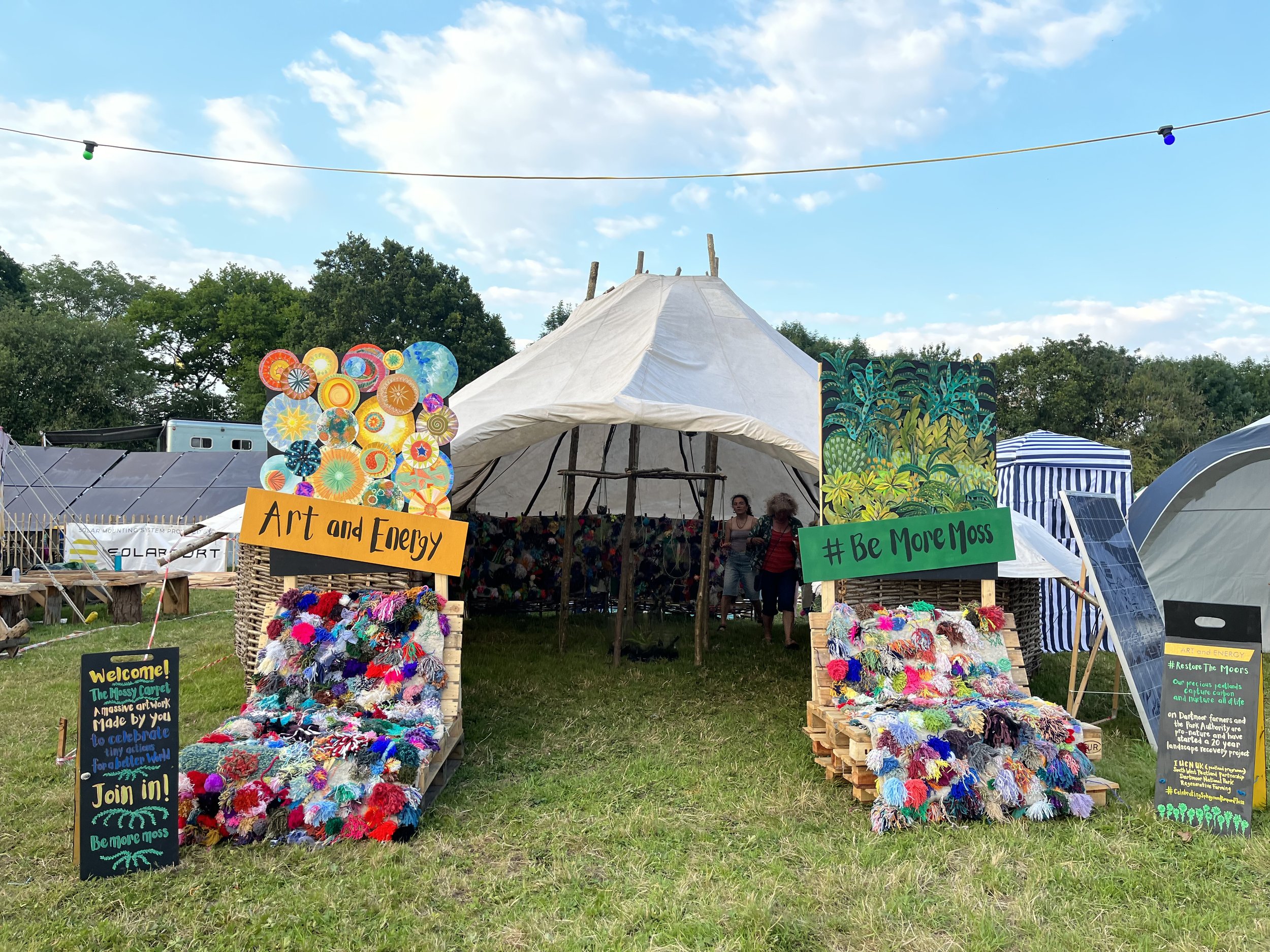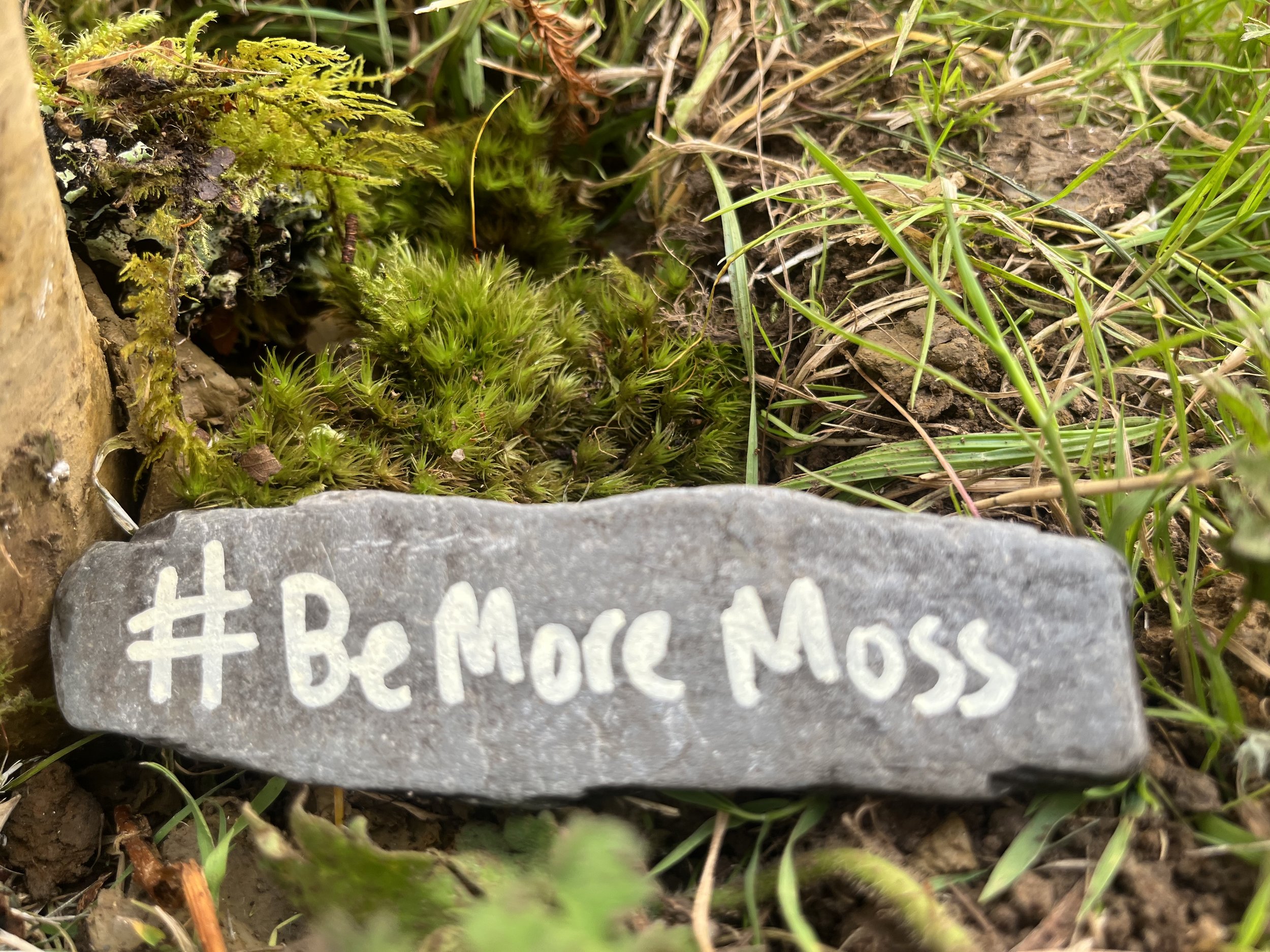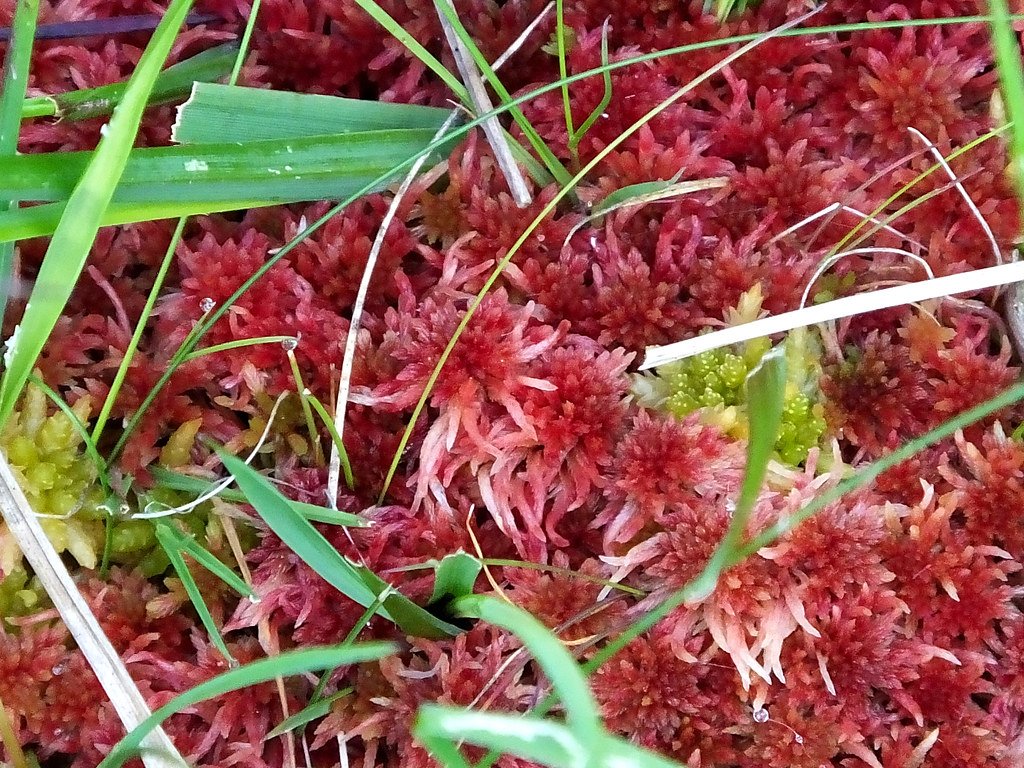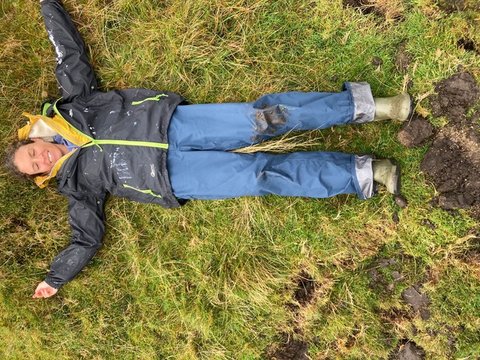Is Peat Good or Bad? Conversations while getting close to moss and making The Mossy Carpet at Glastonbury Festival
People get inspired through a great variety of conversations about The Mossy Carpet.
There are mosses.
‘The first plants that evolved out of the oceans and on to land, surviving through 450million years.’
‘Did you know that mosses were making the environment right for other living beings to evolve before Dinosaurs???’
‘Touch the moss, how does it feel?’
‘How many different types of moss are here – you could look through this magnifier.’
‘It’s a truly wild micro-forest!’
‘It is so cool,’ they say.
Then there are sphagnum mosses – the great bog mosses, purifying the air, preventing flooding, keeping biodiverse environments rich and healthy. Sequestering carbon (we say burying the carbon giant) and making carbon based peat at 1mm per year.
‘It is really damp, holding 20 x it’s weight in water!’
‘It got used as bandages during the World Wars and so many things through history.’
‘Look at the clumps of leaves on top, just like pompoms!’
‘It is amazing, I’d never have guessed,’ they say.
There is the craft of it.
We say, ‘Have a go!’
‘Do you want to join in and make a pompom?’
‘Have a feel and be reminded of mossy landscapes.’
And through crafting we talk. Granny’s knitting, pompoms made at 10 years old, sewing and then repairing, dressing up costumes (We were at Glastonbury Festival in which any style of clothing passes!), upcycling, other arts and crafts, life, and the universe.
‘It is so calming’ they say.
Introducing ‘Tell the Tardigrade’ always brings smiles, and stories of space and invincibility. This tiny, microscopic creature, the mossy pig, can dismantle itself and stay in a sort of stasis for a while when conditions are extremely bad, then ‘coming back to life’ when times are best for living. ‘What do I do that’s good for the world?’
‘How can I be more moss-like'
‘What about growing vegetables’
‘Repairing my clothes?’
‘Eating all my food up.’
All these small actions are spoken to the telephone to be part of the audio for the carpet later.
‘Hello Tardigrade, I do this small thing...’ they say.
We go for the sheer joy and celebration in this massive participation artwork made, so far, by more than 20,000 people. Every little action carried out does make a difference when connected to everyone else's. We can’t be the perfect activist, but we can all do something small and celebrate what that means.
‘I haven’t usually got time, but I could do this’ they say.
Tardigrades popped up when we least expected them at Glastonbury – here is one being screened as part of a sound art piece about the Universe at the Tree Stage.
We get asked ‘Is peat good or bad?’ When we begin conversations with visitors to the display sometimes unexpected questions come up.
‘Is peat-free compost necessary because the peat is bad for the environment?’
We said ‘Peat is great for the environment – it is a fantastic soil, full of microscopic creatures, an entire world in itself. As a carbon rich soil, it is dark, and the sphagnum moss in the boggy environment not only makes it but prevents the carbon coming back into the atmosphere. Across the globe only 3% of peatlands are in a good wet state, they are dug up, washed away, blown away, poisoned. They need restoring and regenerating.’
‘Now I know Peat is good, I will tell my friends’ they say.
People went off happy to know more about the significance of peatlands on our moors and around the world. They left with a feeling of the need to do some more to benefit the world, it could be an exceedingly small thing, which if replicated could make a huge difference.
‘The future holds more love and peace now,’ they say as they leave us.
We were at Glastonbury Festival, after all!
Thanks for support from Southwest Peatland Partnership, IUCN UK Peatland Programme and Dartmoor FiPL grant scheme, Dartmoor National Park.
For more information about sphagnum, peat and peat free horticulture visit these links:
https://www.iucn-uk-peatlandprogramme.org/biodiversity/species-showcase-sphagnum
https://www.iucn-uk-peatlandprogramme.org/news/peat-free-horticulture-reality-and-opportunity

























